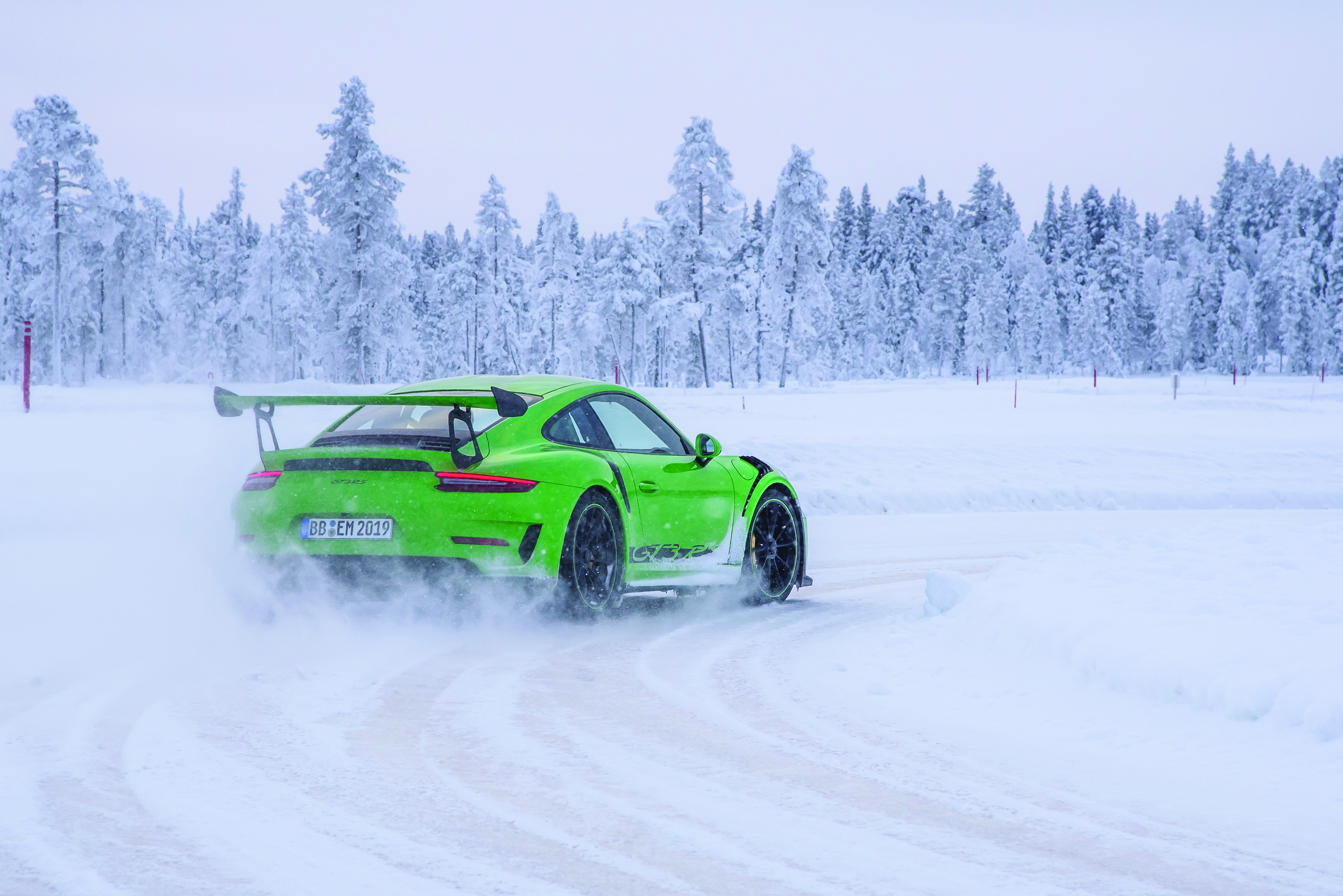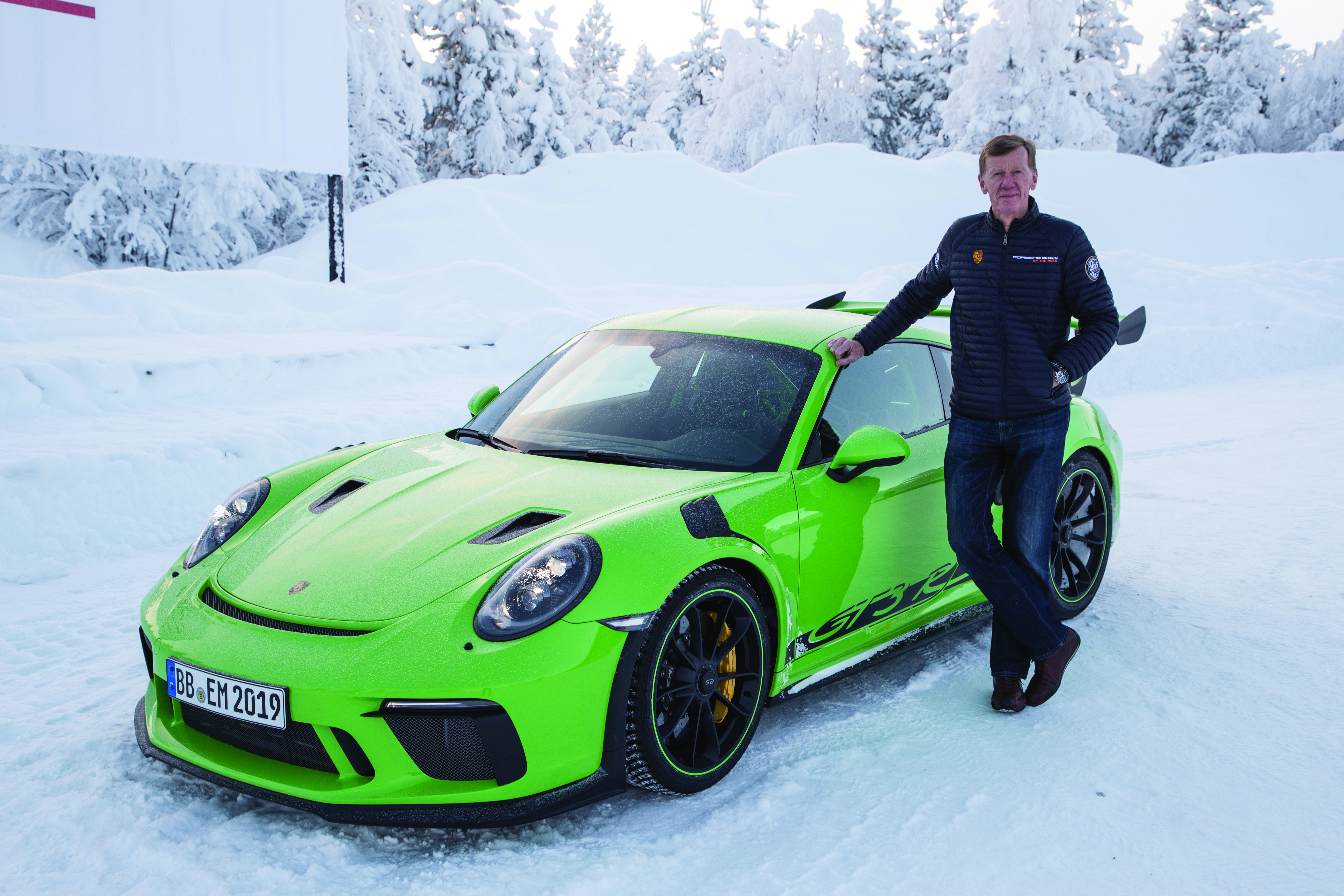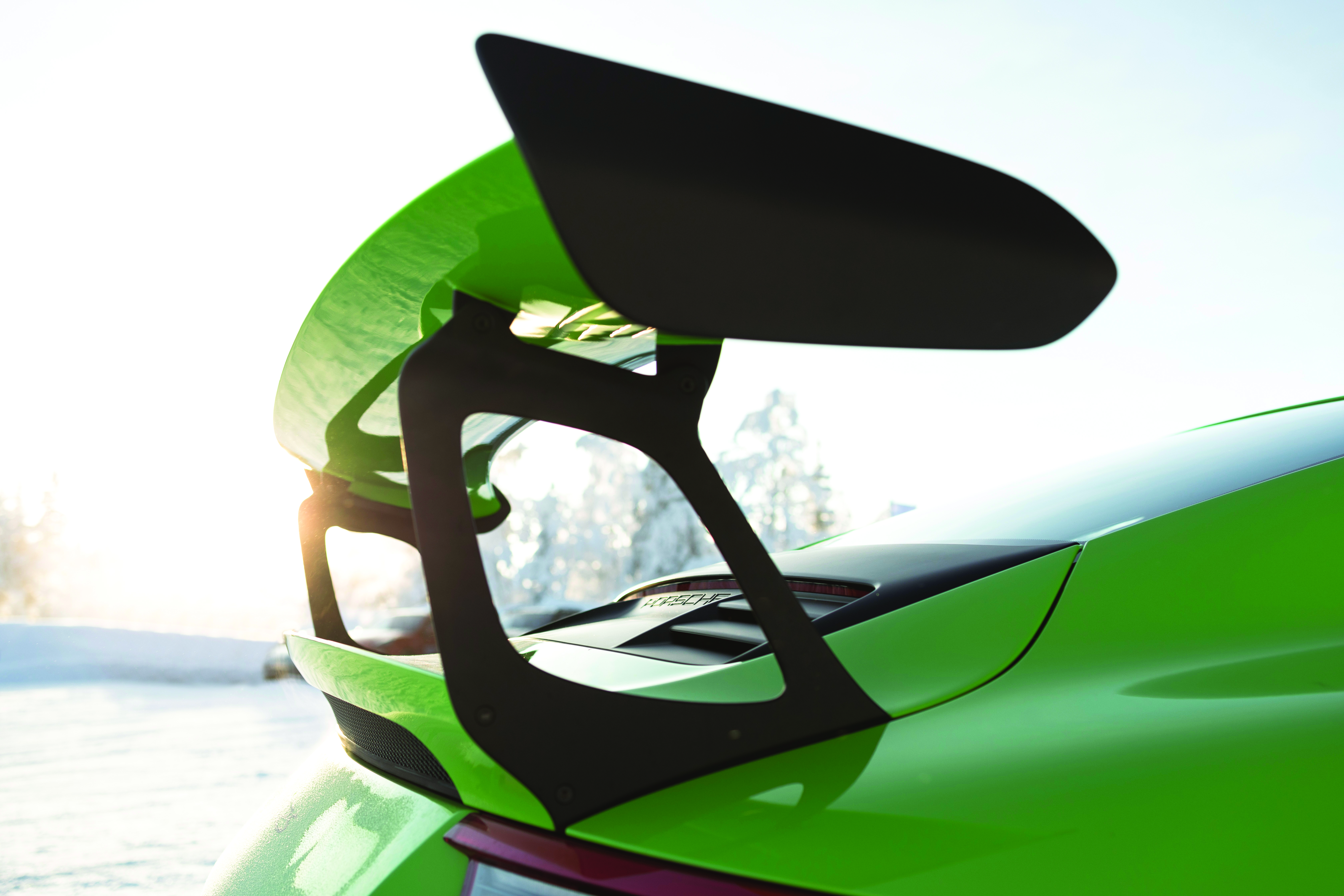Walter on ice! Drifting the new 991.2 GT3 RS
“You wouldn’t believe how much empirical stuff is still involved despite all the computers. You have to try stuff out,” says GT boss Andreas Preuninger about the new 911 GT3 RS. He’s talking specifically about those NACA ducts that are borrowed from the GT2 RS, saying that the gains they brought were far more significant than they imagined.
“The first and most brutal element for track use is they cool the brake better. Secondly, by getting so much good air from the top to the bottom through the body, we can make the air shovels, which are attached to the lower arm, a lot smaller so they’re not slammed in the wind, offering resistance. In normal form they cost us a little bit of downforce, so if you make them shorter so you’re better on the downforce side you don’t lose. They also affect the coefficient drag. This air that we suck into the brakes makes for a cleaner airflow over the car. It’s three positive points,” explains Preuninger, adding: “we astounded ourselves.”

We’re at Porsche’s Experience Centre in Finland, about 110 miles north of the Arctic Circle, and Preuninger and I are walking around the new GT3 RS. It’s cold, minus 28, the GT3 RS looking a little bit incongruous in its winter setting. We’ll see it officially again at the Geneva Motor Show in March, but at this early preview there’s a chance to pour over the details – and have a ride. Walter will be driving, that’s Röhrl, on a track cut from a frozen lake. But that’s later on, for now Preuninger’s keen to talk about his team’s latest creation, despite the biting chill.
“Our main development target under our second-generation GT3 RS was to make it more precise,” says Preuninger, pointing to the developments in aerodynamics and suspension rather than increases in power. The engine is essentially identical to that in the GT3 – it revs to the same stratospheric 9,000rpm – but thanks to the RS’s differing inlet tract via the Turbo-derived body’s intakes fore of the rear wheels, as well as a differing, RS-specific exhaust system – which, unlike the car pictured will have larger 98mm tail pipes – it now develops 520hp.

That’s 20hp up over the GT3, torque too increasing by around 10Nm, the gains mostly felt above 4,500rpm. That’s conservative, too; Porsche could homologate the car at 527 to 530hp, but in typical fashion, and in a bid to ensure it produces all its performance regardless of the environment it’s in, that 520hp figure is the one it’ll quote, as is a 3.2 second 0-62mph time. “There’s still meat in that engine as it is,” admits Preuninger in response to questions about whether they considered a larger capacity, and, tantalisingly, he lets slip they’ve explored it running at greater than 9,000rpm, though changing that “makes no sense”.
The electronic control of the engine has been finessed in that goal for more precision and quicker responses. Even so, Preuninger admits that engine will only account for around one second of the gains the RS will inevitably make around the Nürburgring. And a time? We’ve discussed the spurious nature of quoted lap times numerous times before, but Preuninger concedes: “It’s definitely something you can measure your progress in, but I wouldn’t sacrifice feel of the car and sensation when you operate it for a lap time. It has to come together. When you have both then it’s a winner.” As yet it’s not been set, but the GT boss anticipates it to come in at around seven minutes and five seconds, which is an appreciable improvement over the Gen1 car.

Key to a faster time will be the chassis improvements. It’s not surprising to hear that the GT3 RS borrows from the GT2 RS in this respect. Underneath it’s essentially the same, with ball-jointed mounts throughout the suspension, the only chassis fixture to feature a bush being a single link for the rear-wheel steering system. “It wasn’t necessary to change that one,” admits Preuninger.
For the full article, pick up your copy of Total 911 issue 164 in shops now or get it delivered to your door via here.

Comments (0)